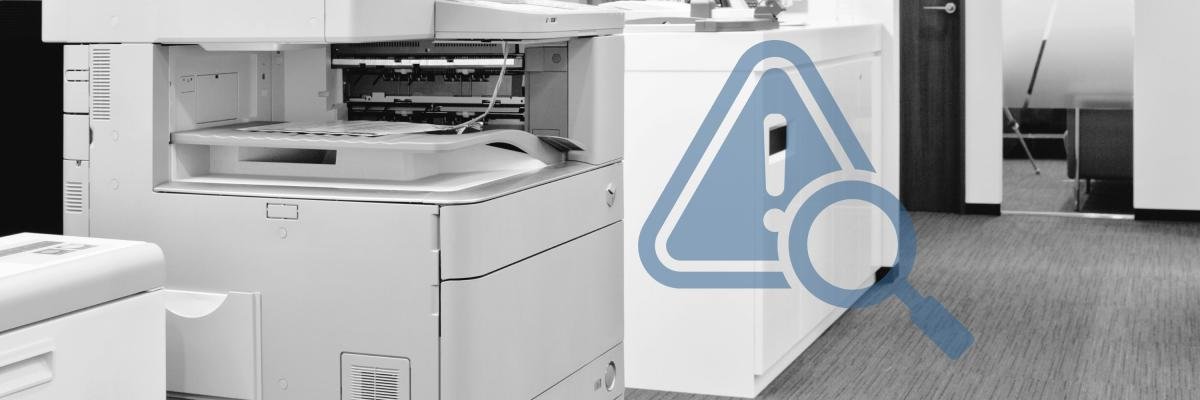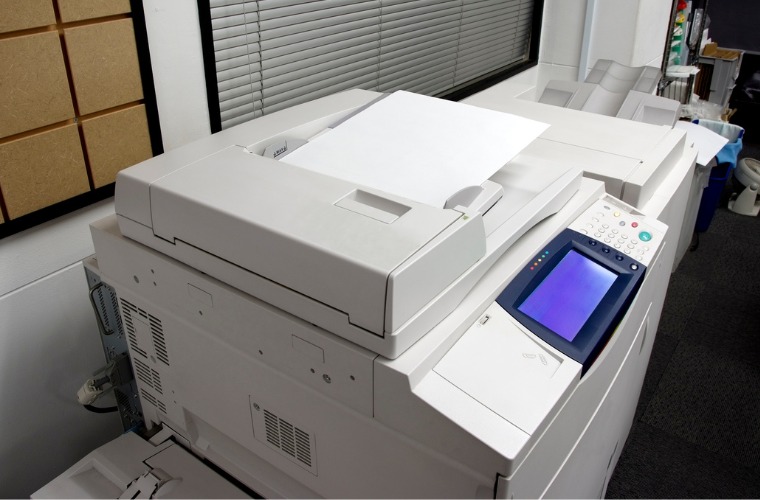
Did you know that most business copiers and printers have a lifespan of 4 to 7 years? If your copier is older than that, it could be putting your business at risk. From security vulnerabilities to reduced efficiency and rising maintenance costs, an outdated copier can create more problems than you might realize.
At Strategic Technology Partners of Texas (STPT), we’ve been in the print business for nearly 40 years. We’ve serviced and replaced countless copiers, helping businesses like yours find the balance between performance and cost. We know the signs that a copier has reached the end of its useful life, and we understand how to maximize its lifespan until you’re ready to upgrade.
In this article, we’ll help you assess whether your old copier is a liability. You’ll learn about copier lifespans, the risks of holding onto aging equipment, and the benefits of upgrading to a newer model. Plus, we’ll guide you on how to make the transition if it’s time for a change.
Understanding Printer Lifespans
Printers and copiers don’t last forever. Here’s a quick breakdown of their typical lifespans:
- Laser Printers: Designed for higher volumes, laser printers generally last 5 to 6 years with proper care and maintenance.
- Inkjet Printers: These are better suited for smaller workloads and usually last 3 to 5 years.
Factors such as usage, maintenance routines, and the quality of toner or ink cartridges can impact longevity. For instance, keeping firmware updated and using OEM (original equipment manufacturer) parts and supplies can significantly extend the life of your device.

Common Risks of Having an Old Printer
1. Performance and Productivity Issues
Older printers often become less reliable. This can result in downtime, missed deadlines, or staff frustration when the device is unavailable.
2. Security Vulnerabilities
Aging printers lack modern security features, leaving your business exposed to risks like data breaches and ransomware attacks. Hackers often target network-connected devices, including printers, as they’re seen as easy entry points.
3. Higher Costs
Repairs for older devices become increasingly expensive, especially if parts are difficult to source. Additionally, outdated printers are less energy-efficient, driving up utility costs over time.
4. Limited Functionality
Newer models offer advanced features like wireless connectivity, cloud integration, and faster print speeds. Older devices can’t keep up, which could put your business at a competitive disadvantage.
Holding on to an outdated printer may seem economical, but these risks often outweigh the benefits, especially if you’re dealing with sensitive data or a fast-paced work environment.
Cybersecurity is a growing concern among print users. To learn more about the security risks associated with an outdated printer, read our blog Why Are Older Printers Security Threats and Should I Replace Them?
Signs It’s Time to Replace Your Printer
Not sure if it’s time for a new printer? Look out for these warning signs:
- Frequent Repairs: If you’re calling the repair technician more often, it may be time to upgrade. Repair costs for older devices can quickly add up, especially when they’re out of warranty.
- End of Service Notices: Many manufacturers eventually stop supporting older devices, meaning spare parts and service contracts will no longer be available. They’ll also no longer provide firmware updates addressing newer security risks.
- Slow Performance: If your copier can’t keep up with your current workload, it’s likely time for a replacement.
- Poor Print Quality: Consistent issues with print clarity or streaking are signs that the hardware is deteriorating.
If you’re noticing these problems, it’s probably more cost-effective to invest in a new printer than patching up an old one.
For more information, read our blog on 5 Signs It’s Time to Upgrade Your Printer.
Benefits of Upgrading to a New Printer
Switching to a new printer comes with several benefits:
- Improved Security: Modern printers include advanced encryption, secure printing options, and other features to protect sensitive data.
- Enhanced Productivity: Faster printing speeds, higher-quality output, and features like mobile printing and cloud integration make work more efficient.
- Cost Savings: Newer models are more energy-efficient, helping reduce electricity bills. They also require fewer repairs, saving on maintenance costs.
- Sustainability: Many new devices are designed with eco-friendly features, such as reduced power consumption and the ability to use recycled paper.
- Future-Proof Technology: Investing in a new printer ensures compatibility with the latest software and devices, giving your business a technological edge.
How to Get a New Printer
When you’re ready to buy, it’s best to choose authorized resellers or go straight to the manufacturers. This way, you get genuine products, proper support, and warranties, enhancing your overall experience and peace of mind.
Before you consider upgrading your machine, it’s smart to chat with your print vendor about any questions or worries. They can take a closer look at your printers and what your business needs, helping you decide if an upgrade is the right move.
When it’s time to replace your copier, here are some options to think about:
- Trade-In Programs: Some companies let you trade in your old printer for credit on a new one.
- Leasing: Leasing means you can use the latest printers without paying a huge amount upfront. It’s a great choice for businesses that want steady monthly payments.
- Purchasing: If you want to fully own your printer, buying a new or refurbished one is a solid option. Refurbished printers can save you money while still performing well, as long as they’re not too old.
Learn more about the pros and cons of leasing or purchasing here.
Preventative Care: Lowering Risks While Managing an Old Printer
If replacing your old printer isn’t feasible right now, there are steps you can take to minimize risks and extend its lifespan. Preventative care, like regular maintenance and managed print services (MPS), can help keep your device running smoothly while also helping you decide when it’s truly time to upgrade.
1. Routine Maintenance and Service Plans
Regular maintenance is key to keeping older printers in good working condition. A maintenance planensures potential issues are addressed proactively, helping your printer last longer. At STPT, our skilled technicians are upfront and honest—whether you need a simple repair or it’s time for a replacement, we’ll help you make the right call.
2. Managed Print Services (MPS)
MPS provides proactive monitoring, automates firmware updates, and identifies at-risk devices in your fleet. These services streamline printer management and protect your business from costly downtime or security vulnerabilities. Learn more about our MPS here.
With these preventative measures, you can extend your printer’s life and maintain efficiency until you're ready for an upgrade. Reach out to STPT to learn how we can support your printing needs.
Want more printer care tips? Check out our blog on 8 Tips to Increase the Lifespan of Your Printer.
Ready to Upgrade Your Printer?
At Strategic Technology Partners of Texas, upgrading your printer is simple and hassle-free. Our catalog offers a variety of printers for small and large businesses. You can easily filter your options by condition (new or used), print speed, and price. Plus, our product configurator helps you customize your printer with the accessories and finishing options that perfectly fit your needs.
Don’t let an aging copier hold your business back. Explore our catalog today and take the first step toward a more efficient, secure, and cost-effective printing solution.
Not sure if it’s time to replace your copier? Contact Us. Our print experts will evaluate your current setup and guide you to the best solution.

